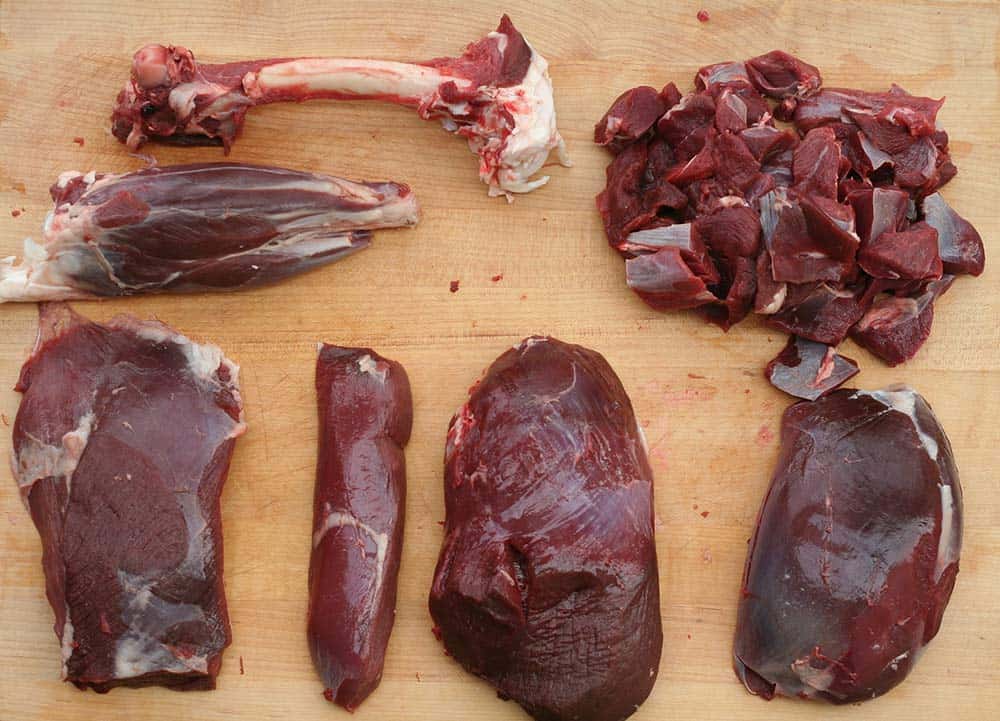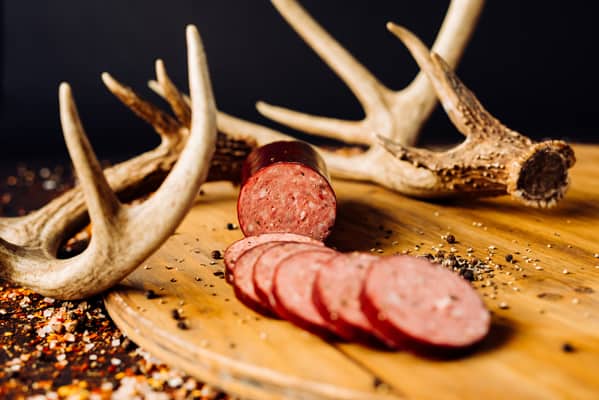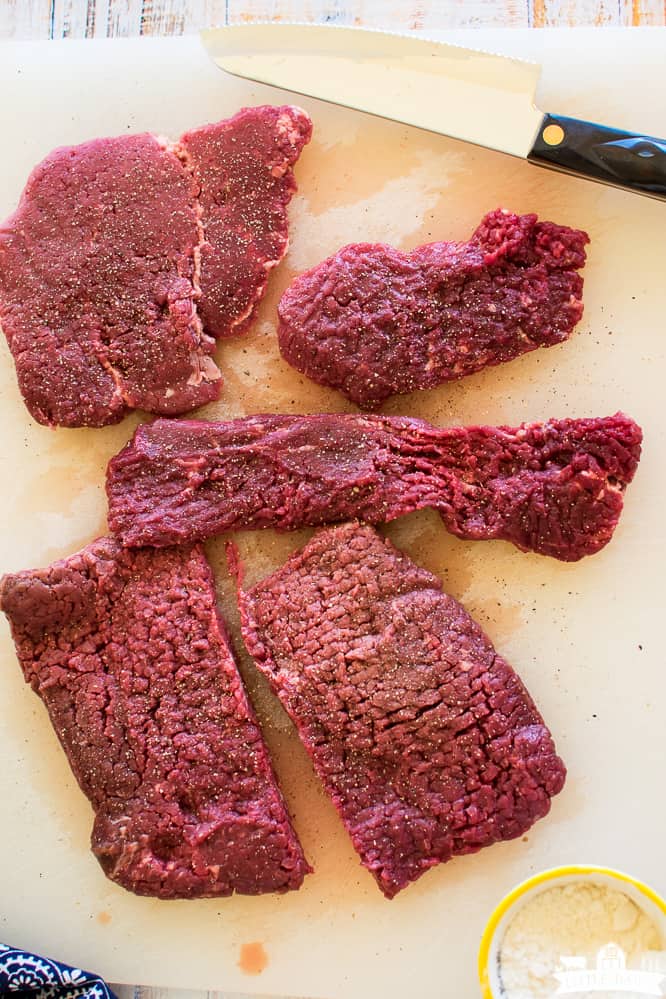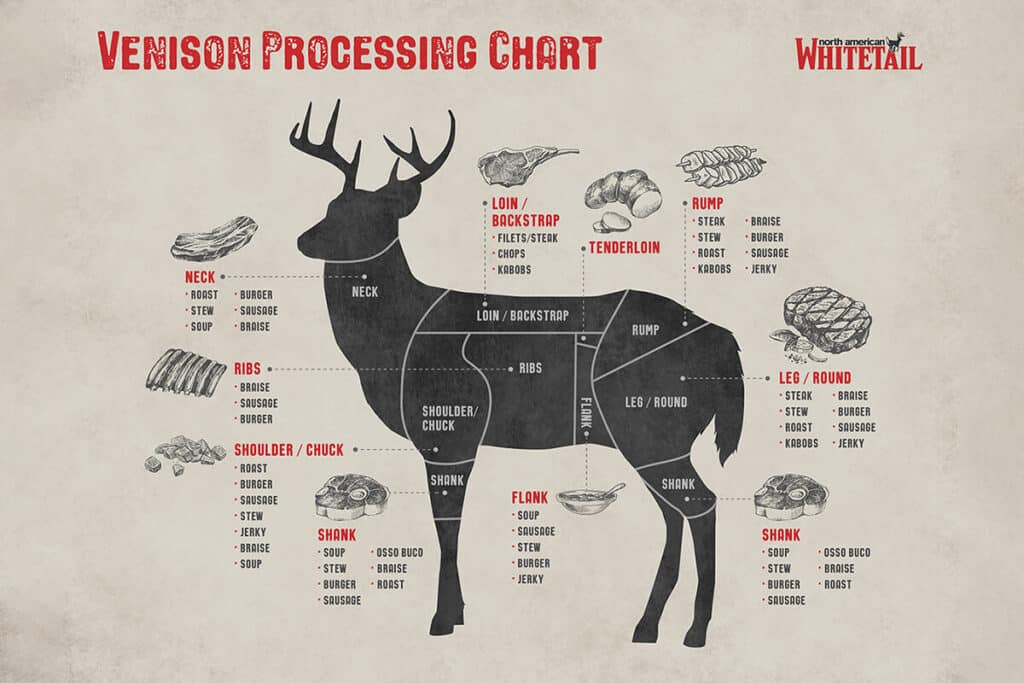If you’ve landed on this page, you’ve probably had a successful hunt or are getting ahead of the game and doing research before you harvest an animal. Meat from wild game is the healthiest and arguably the best-tasting meat in the world, but it needs to be correctly cared for from the field to the table. Luckily, once you’ve done it a few times, this process isn’t too hard to do yourself.
If you’d rather leave the processing aspect to the professionals, that is an option too! A professional processor is usually pretty good at what they do, but you will pay a premium for their service. Learning how to process a deer is a defining skill of a seasoned hunter, and there is no better way to learn than to do it!
In general, DIY deer processing is more affordable and gives you more control over your end product. Most professional processors do a good job, but not all of them. Although processors are great to use if you are new to hunting or don’t have enough time to process a deer yourself.
Today, I’ll go over the steps of deer processing and the pros and cons of professional and DIY processing. We will also go into further detail on costs, the amount of time it takes, and the quality of the final product.

How Do You Even Process a Deer?
If you don’t have much experience, deer processing can be complicated, time-consuming, and can seem like a chore. Don’t worry though, the first time a now professional deer processor skinned a deer, they didn’t know how to do it either. Over time you will get more efficient and faster. Practice makes perfect.
Processing a deer is a multiple-step process, and the work begins right after the harvest. If you can, ask an experienced hunter to help you the first time. This will drastically speed up the learning curve and ensure that you have a good foundation of knowledge to build on. If you don’t have an experienced hunter that’s willing to help, it’s a good thing you found Omega Outdoors!
I will try to keep this list as updated as possible, but if you want that background information before you try skinning and processing a deer for the first time, here are some of my best processing resources roughly in order of how you would do them.
- How Long Can You Wait to Gut & Clean a Deer? – A guide to deer retrieval after the shot.
- How Much Meat You Get From YOUR Deer [Yield Calculator] – A guide to how much meat you can expect after cleaning a deer, plus a bit about how to maximize your yield, and a good video covering the basics of butchering a deer.
- A Beginners Guide to Aging Deer Meat – A detailed guide to what you should do with deer meat after you get it off the carcass, this is usually where most hunters go wrong.
- How Long Does Deer Meat Last in the Freezer? – A guide to freezing deer meat correctly, and how to tell if it has gone bad when you are ready to thaw it out.
- Why Does Deer Meat Taste Gamey? – An overall guide to processing deer, going step by step through the process so you can tell where you went wrong if your meat turns out tasting “gamey”. This is likely my best resource for true beginners trying to learn the entire process.
If you’re hunting within a half mile or so of a road you are probably going to field dress the deer. Meaning you remove the organs, aka gut it, and take it somewhere else to skin it. If you are over a half-mile you’ll likely break down the deer using the gutless method. This is where you ignore the guts and quarter your deer and remove the tenderloins immediately. Personally, I have a cooler and a vehicle close by when I use this method.
Regardless of what method you choose, you should do it immediately and get your product on ice, so that the meat can cool down as soon as possible. Additionally, you want to avoid getting any stomach, pee, scat, glands, or hair on the meat. Hair takes some experience to avoid, but urine and organ tissue can be avoided on your first try if you pay enough attention.
After you get it home and in a cooler, it is time to age it! There are a ton of different aging methods. Personally, I age my deer in a cooler for 7 days. This is as simple as making sure the cooler never runs out of ice, and placing it on an incline so the melted water runs out. You never want your meat to sit or soak in bloody water. I go over this method in more detail in this article here if you’re curious.
Once the deer is aged, it is time for the actual processing part of processing a deer. You can also call it butchering. You can bring a cleaned deer to most deer processors, but some require you to quarter them, or give you a discount if you do so. So even if you use a processor, you will have had to do some of the things I already mentioned here by yourself. Here is one of my favorite Meat Eater episodes that goes over this process in detail.
DIY Vs Professional Processing
While processing a deer yourself can be daunting at first, with experience it isn’t hard to do. There’s certainly a learning curve involved and it’ll still take time to complete. For some people with limited time or interest, hiring a professional processor is the best option. With that said, I am going to show the pros and cons of both deer processing options.
DIY Deer Processing
I like processing deer myself because I like knowing that I have complete control of the quality of meat that I will be feeding to my family and friends. This includes the amount of hair, bone, and other “impurities” that can sometimes be found in the meat processed by those less skilled or less caring.
I had a very bad experience years ago after dropping off boneless cubed meat to a processor. They ground “my” deer but the ground burger had a bunch of bone in it. They gave me another batch of burger, and that one had bone too. That said, I know many other hunters and family members that still have a professional process their meat and they’ve never had a problem.
My experience certainly isn’t the norm and there are plenty of reliable processors out there, but it did lead me down the path of butchering everything I harvest myself. Although what makes DIY processing worth it for me?
- You control the quality of meat from start to finish. To me, this is the most important reason and primarily why I do it myself.
- You gain the know-how of processing deer, and therefore all other animals. Everything is put together pretty much the same way, including you. Plus, you understand deer on a much more fundamental level.
- If you harvest a lot of deer, it’s MUCH cheaper in the long run to do it yourself. If you want the processor to skin your deer and butcher it into edible portions, you could pay anywhere between $200 and $300 per deer. If you skin and quarter your own deer, the butchering may cost between $100 and $200.
- You can experiment with seasonings and fat content that’s added to the meat to get your desired product. It’s better than only having ground meat or summer sausage as options for your meat.
- You get a quicker turnaround. After aging, your meat is ready to be butchered, and after you spend a few hours doing that you have edible meat ready to go! It can take multiple weeks and even a month to get your deer back from a processor.
Did You Know I Had a Newsletter?! 📬
I do! I send out a weekly email that talks all about deer hunting and is a bit more personal than a regular article. If you sign up right now, I will even send you the first chapter of my Ebook “The Hunters Guide to Scent Control” for free! What is there to lose? 🙂
So that is what I like about DIY processing, but it isn’t all sunshine and rainbows. Here are some of the things that aren’t so great about it.
- The initial cost of equipment isn’t cheap and it’ll take a few deer for you to recoup your costs. You might need gear like, butchering knives, coolers, and a grinder or cuber.
- It takes time to learn how to process deer and at first, you may not get as much meat off of your deer as a professional would. Check out my meat yield calculator to estimate how much meat you’ll get from a deer.
- You need to have a place to store the meat before you process it. This isn’t too big a deal with deer, but it is helpful to have a spare refrigerator, room to hang it in a garage if it’s cool, or a large cooler. I’ve processed deer in one-bedroom apartments, so a lot of room isn’t a necessity, it’s just nice to have.
- Lastly, it just takes time and effort. Cleaning and quartering deer can take all of 15 minutes when you know what you’re doing, but butchering can still take hours. Then you have to seal it and freeze it properly, it’s a chore for sure.
Professional Processing
Reliable and trustworthy professional processors are often the answer many busy hunters are looking for. If you don’t have a lot of time, aren’t worried about the additional cost, or don’t have the space, a professional processing service might be just what you need. Although I don’t use a professional processor anymore, at one time I did, and as I said before many hunters I know do. Here are the main reasons why.
- The biggest advantage of using a professional processor is time savings. Once you get the deer out of the woods all you have to do is drive to the processor and drop it off. Generally, a few weeks and sometimes months later you can pick up your finished product.
- If you’re using a reliable processor, the final product will taste great and be hair and bone free. Plus, you can get summer sausage made, which you may not have the equipment to do at home.
- An experienced processor will get more meat from a deer than the average hunter. Studies show that experienced butchers can get up to 15% more meat off an animal than a beginner. That isn’t surprising, but it is certainly noteworthy.
- It is very convenient to go ahead and let the processor do your butchering if you are also getting them to mount your deer.

Like DIY processing, there are also plenty of cons to getting your deer done by a professional. Here are some of the most significant ones.
- The cost of having a professional process your deer for you can be quite high. Granted this often depends on what the final product will be. Seeing as this is the most important con, I have a whole section dedicated to it next.
- Not all processors are reliable and it can take some groundwork to figure out which ones are. Sometimes it’s as easy as asking a friend, but if you are the only one that hunts or wants to use a professional processing service, you might have to go through a little trial and error.
- If you don’t like the seasonings in the processor’s final products you are out of luck or will need to search for a new processor. Often, the processors will have very specific recipes they use and they won’t change them just for you.
- You might not always get your deer back quickly, especially if you use a popular processor.
Cost of Deer Processing
I mentioned in the pros and cons section of this article, there are specific costs associated with going the DIY or the professional route. Below, I break down the costs for each method. These costs won’t be exact because prices vary by locality and product but they should give you a good idea of what you can expect.
DIY Deer Processing
The primary costs for DIY processing are startup costs. Reliable electric meat grinders and stuffers aren’t cheap. The good news is that you can get away with only buying a grinder, especially if you plan on processing one or two deer a year. Meat stuffers are nice but unless you are processing large amounts of meat into brats or sausages, they aren’t essential.
A good meat grinder will cost around 300 dollars or more. Cheaper meat grinders are available, but I highly recommend spending the money upfront on a good one. I’ve burned through several of the cheaper ones within a few years. They always end up burning up the motor or leaking oil into my ground meat.
There are several good brands on the market that sell meat processing equipment. I prefer and recommend LEM grinders and stuffers. I’ve used both and have never had an issue with either. If you are only making ground meat and not making sticks or summer sausage, you can get by without the stuffer. That said, stuffers make packaging ground meat much more efficient.
If you’re grinding meat, you will also want ground meat bags and a packaging system. These items make it a lot more efficient to grind your own meat. The last item you will need is two meat lugs or two big salad bowls. I used to use a big bowl to grind the meat, but after purchasing and using these lugs a few times, I will never go back.

If you don’t want to grind your meat, you can buy a cuber instead. When you are processing your deer, cut it into smaller slices, and pass them through the cuber. This will tenderize it and then you can just put them straight in freezer bags and call it a day.
No matter what you do with the meat, you are going to need to freeze a lot of it. You’re going to need plenty of freezer space and some quart and gallon sized freezer bags. You can also get a vacuum sealer, and those things are truly awesome for storing your wild meat, but they are certainly not cheap, and you can skip out on them if you are just starting out.
Professional Deer Processing
One of the downsides to having your deer processed by a professional is the cost, but it doesn’t have to cost a lot. Processing fees are typically a lot lower for packaging whole cuts like roasts and steaks and grinding meat. Additionally, many professors charge less if you bring in meat to be ground already cut off the bone and diced into small pieces for the grinder.
If you prefer to have bratwurst, hot dogs, sticks, sausage, and other specialty meats made you should expect a much higher bill. Not only does it take longer to make specialty meats than ground meat but typically the processor will add at least 20% pork or beef fat so it sticks together.
Having an entire deer processed will cost around a minimum of $125 to $150 but this depends on locality and the processor. These costs usually include standard cuts and sometimes grinding a portion of the meat. Grinding deer meat usually costs around $1-$1.50/lb for ground meat. Expect to pay more when adding fat or spices for ground sausage. For specialty meats, you should expect the price to be anywhere from $2/lb to $5/lb depending on the final product.
In my experience, it’s pretty easy to spend $200 or more per deer at a professional processor. If you don’t want to bring your deer into the processor skinned and quartered, you can expect to add another $50 to $100 to your bill. Buying your own equipment doesn’t look so expensive anymore does it?
How Long Does It Take to Process a Deer?
Deer processing time varies considerably by the person’s experience, amount of people helping, and the tools and space available. Of course, we all want our deer back as quickly as possible, but processing takes time. Deer processors are extremely busy during the season, so don’t expect them to be too fast.

DIY Deer Processing
For an experienced processor, it shouldn’t take more than an hour for two people to skin and debone a deer. For some, it takes considerably less. If you don’t have much experience though make sure to give yourself plenty of time and don’t rush. It’s more important to get a good product than to focus on speed.
If you are keeping a few whole cuts like the tenderloins, backstraps, or a few roasts and steaks from the hindquarters and grinding the rest, it shouldn’t take more than 4 hours to process a deer. This can vary dramatically though depending on the quality of the meat grinder, how clean you kept the meat in the field, how experienced you are, and if you have help.
Making brats, deer sticks, and other specialty meats can extend the processing time quite a bit. I like to figure on making 20 pounds of sausage in about three hours. This includes the initial grind, mixing spices, cutting up vegetables or fruits added, cooling the meat down in the freezer, grinding a second time, packaging, and cleaning up.
Professional Deer Processing
The time it takes a professional to fully process a deer is going to be much faster than the average person. However, that is only when they have the time to do it. It might take months to get your meat back during busy times. Be ready to wait, especially if your state has short seasons where the majority of deer are harvested in a few days. The processors get extremely busy during this time and you’ll have to be patient.
If your state has long seasons or you shoot a deer during a slow period, you may get the meat back in a few days. You can always ask for an idea on how long it will take, but don’t be surprised if it takes a little longer than what they tell you.
You should also consider if the processor is currently working on other animals like cattle or pigs. They may not be able to get to your deer right away. If you’re in a rush to get your meat back, make sure to check with the processor before you drop off your deer to see how busy they are.
Final Products and Quality
In a perfect world, the final products from professional and DIY processing will be equal, but in the real world that isn’t always the case. There’s certainly a learning curve to DIY processing. While grinding meat and cutting roasts and steaks is pretty easy, it can be a trick to figure out a good seasoning blend for DIY brats or sticks.
The easiest DIY method to get a good final product for specialty meats is to buy a seasoning kit. Sometimes meat processors also sell their own seasoning kits and this can be a great route to go. The beauty of it is that you can play around with your product, and what you make in your first year will taste nothing like what you make by year 15.
Professional processors aren’t always equal either. Before going to a processor it’s a good idea to look for reviews and talk with other hunters or even farmers and ranchers that have meat processed there. Additionally, most processors also sell products in their shop. I suggest buying a few different products and trying them to see if you like their seasoning before having your deer processed there.
Finally, the quality of your end product will often be determined by how the deer was handled in the field. If you want to know more about that, read my other article here about how to avoid gamey tasting venison.
The Final Grind
The decision between DIY deer processing and using a professional processor ultimately depends on individual preferences, priorities, and circumstances. DIY processing offers several advantages, such as greater control over the quality of the end product, the opportunity to learn valuable skills, cost-effectiveness in the long run, and the ability to experiment with seasonings and fat content. It can be a rewarding experience for seasoned hunters who take pride in seeing the entire process from the field to the table.
On the other hand, professional processing can be a convenient option for those with limited time, space, or interest in the process. The time savings, consistent quality of the final product, and access to specialty meats are some of the benefits of using professional services. However, the cost of professional processing can be higher, and finding a reliable processor may require some research.
Both DIY and professional processing have their pros and cons, and there is no one-size-fits-all solution. New hunters or those with limited experience may find it beneficial to start with a professional processor. As they become more familiar with the techniques and gain confidence, they might consider transitioning to DIY processing.
In the end, the most critical factor is ensuring the proper handling and care of the deer from the moment of harvest to processing. Whether you choose to process the deer yourself or entrust it to a professional, it is essential to prioritize getting a clean product back, so focusing on the cleaning process from woods to cooler is essential for all hunters. Whichever path you choose, the joy of enjoying that smoked tenderloin on a saturday night will make the effort and cash well worth it.
Sister Post | Do Rutting Bucks Taste Bad? [Effective Processing Methods]
A sister post is another post that I have written that follows along with the same topic as the one you just read. After reading this article, you will probably like this next one even more! Here is a little teaser…
Often hunters want to know if bucks taste worse during the rut. It makes sense that while they are all riled up that the testosterone and other hormones would have some effect, and they do. Although, is it really such a difference…Keep Reading
Rutting vs Non-Rutting Meat
So the question is, if you shot the same exact deer in September as you did in November, would it taste the same? I would have to say…Keep Reading
Properly Caring for Meat
The first thing to consider is what kind of deer you are going to shoot. If you want the best tasting deer possible, you want to…Keep Reading
Thank you for reading my article! I hope you enjoyed it, and if you have any questions or feedback, please send me an email at [email protected]. If you want to learn more about me or Omega Outdoors, visit my About Page. Otherwise, I hope you have a great day, and check out some of my other articles while you’re here!

